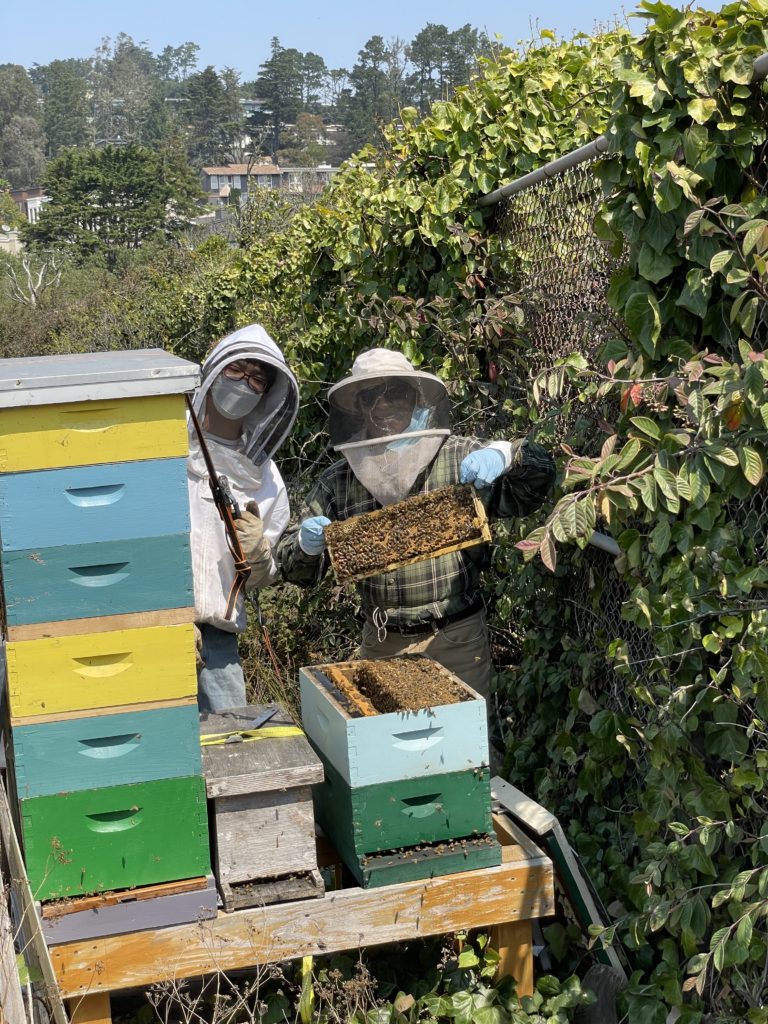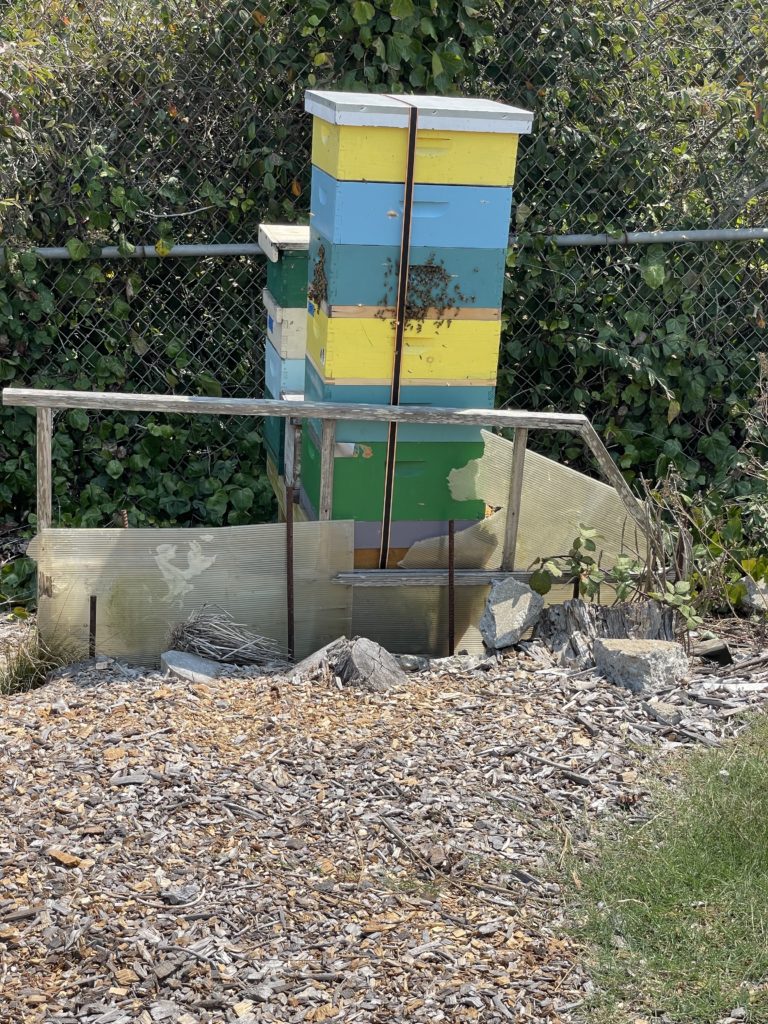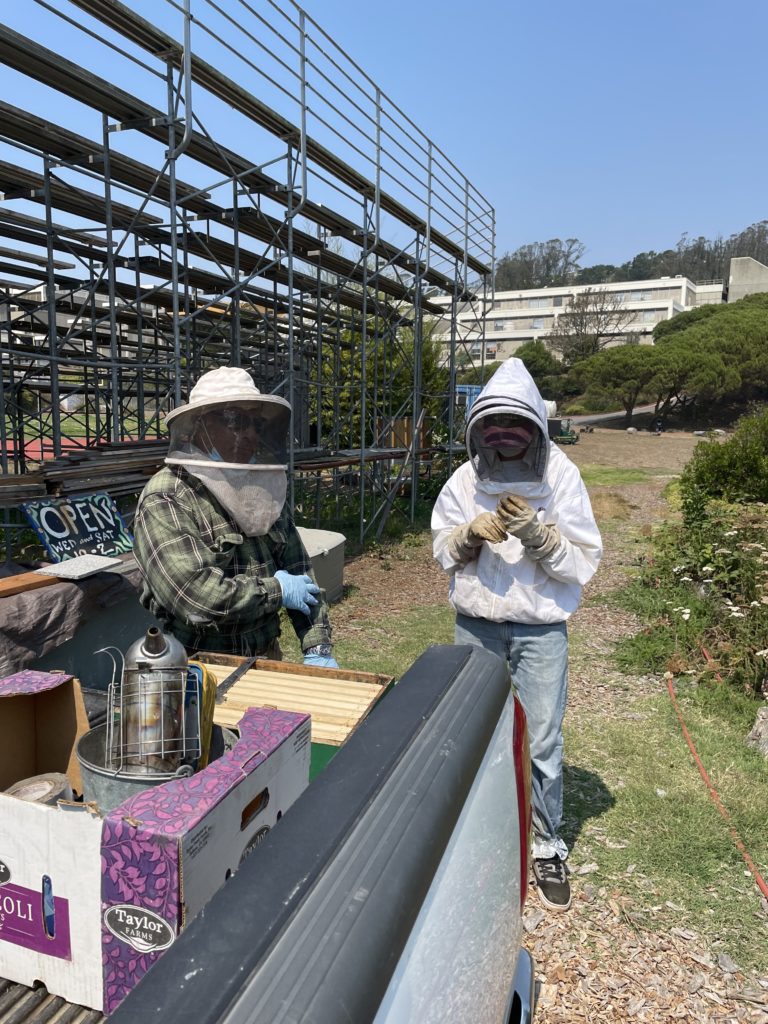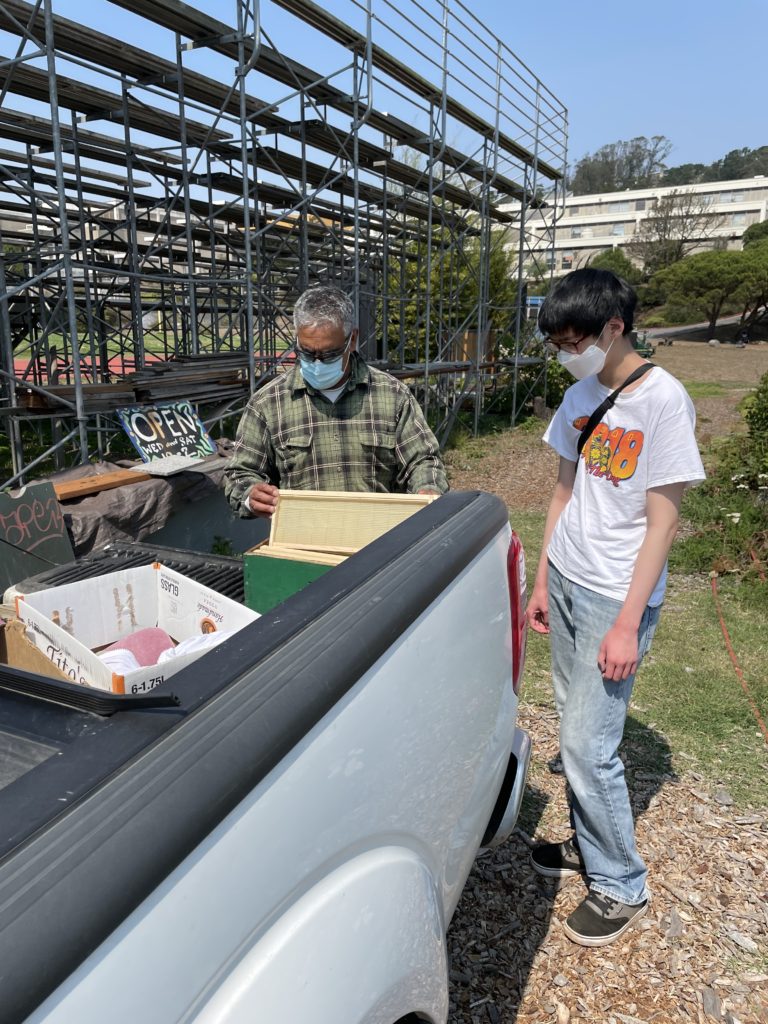
A few minutes before noon on August 28, Fernando Aguilar closed the door of his pickup and walked to the O’Shaughnessy Blvd gate of his alma mater. He unlocked it, got back in and drove to his beehive on the campus of the former of McAteer High School.
Aguilar, Class of 1976, tends a hive housed several yards from the football field. He was waiting for the arrival Kai Tong whom he’d arranged to mentor.
Kai, together with his mother, arrived promptly at noon.
Kai, 15, is an inquisitive sophomore at International High School who finds insects fascinating; Aguilar, 63, is a PG&E Senior Consulting Project Manager who supervises electric transmission projects such as the substation rebuild on the corner of Glen Park’s Rousseau Street.
As in Jean-Jacques Rousseau, the French Enlightenment philosopher who in 1762 wrote Emile, a book about a hypothetical 16-year old boy raised in the healthy and natural countryside and taken under the wing of a tutor who could lead him through novel learning experiences.
When Aguilar isn’t jogging at the former McAteer track, he has made it a ten-year hobby to oversee beehives as near as Glen Park and as far as the Mendocino Boys Club Camp. He also stewards bees on Ripley Street near his Bernal Heights home and at the College Hill Learning Center.
Standing by his truck tailgate, he and Kai suited up preparatory to the afternoon’s hive inspection. They were surrounded by the tools and gear of beekeeping. Aguilar held up a pristine hive frame he’d taken from a green box and informed Kai what to expect when they’d move to the hive. He clad Kai in a protective mask and bee suit, then wrapped duct tape around the boy’s jeans hems. While doing so, he explained the goings on of the “super” or main hive and the individual frames where honey is produced.
Then they walked to the hive. Hundreds of bees hugged the boxes, signaling they might swarm. Kai’s mother kept her distance.
“I’ve been stung 50 times,” Aguilar joked over his shoulder. “But never all at once!”
“It’s a hot day so the bees are ‘bearding’ outside of the hive,” Aguilar explained. “They gather as a method to thermoregulate inside hive temperature thus eliminating crowding.”

Aguilar’s bees number 50,000 in four boxes in the summer. The number drops to 10,000 in the winter.
Mentor and mentee positioned themselves behind the stacked boxes in what soon morphed into an outdoor classroom.
“The hive holds all that the honeybees need to survive,” instructed Aguilar, who is a board member for the San Francisco Beekeeper Association. “It’s a shelter from the elements, a nursery for their babies and food storage of honey and pollen foraged by worker bees up to three to four miles from the hives.”
In fact, a hive is a combination Greek polis, military barrack, funeral parlor, airport and a well-run hotel. Frenchman Rousseau may even have been thinking of beehives when he authored The Social Contract, a benchmark of any civics curriculum and a treatise that serves well in these polarized and health challenged times. Rousseau posited in 1762, the same year he penned Emile, that no one person is entitled to have natural authority over others. He continued that an agreement, a “contract,” be consensually promulgated in which individuals surrender their natural liberty to create a general will based on community.
As Kai would observe, bees — that bundle flying solo with living in concert — very well may have a wing up on us as we continue piloting through the coronavirus crisis.

Kai saw bouncer bees guarding the hive, while worker bees feed larvae, clean the hive and care for the queen. Undertaker bees carry dead bees away. Worker bees fly in, depositing nectar that is fashioned into pure honey. Scouting for nectar, worker bees live on the average 15-38 days in the summer, while the queen can live as long as one to two years. Workers also collect and store pollen, the bee’s protein source.
Aguilar’s ECOSF farm honey is legendary in Glen Park for its sweetness and is sold at an after school SFUSD/ECOSF partnership Farmer’s Market where the proceeds go to ECOSF. His honey is also a salute to the flowers and shrubs that blanket Glen Park, Diamond Heights and Mount Davidson.
“Honeybees thrive in neighborhood gardens,” he told Kai, “much better than on farms where pesticides are common.” The honey sold in supermarkets “just doesn’t compare.”
Aguilar’s lesson objective was simple, demonstrate what he routinely does once every two or three weeks to inspect the health of his hives.
He lifted the lid off the top box and opened it with a hive tool, which looked like a kitchen spatula.
“It’s important to work from behind an entrance,” Aguilar taught, “so guard bees in front don’t become alarmed.”
Aguilar pulled off a frame, one of eight in each box. It was coated with golden honey and quilted with busy bees.
“All good?” he asked, as an errant bee flit against the boy’s mask. “You OK?”
Kai nodded yes.
“The bees aren’t as scary as I once thought,” Kai told the Glen Park News, “and the bee keeping is a lot less chaotic than I imagined.”
Aguilar demonstrated how he removes the “queen excluder” that prevents the queen from laying in the upper boxes or “supers,” which make subsequent honey extraction easier. “Super,” he explained is Latin meaning above or top and is from superstructure.
He then dug further into the lower boxes where he continued finding a treasure of eggs, honey and pollen, a sign of a healthy queen and hive. He was now deep into the “brood” portion of the hive. He held up a frame of mostly sealed brood (babies). Worker bees, he detailed, take about 21 days to develop from egg, larva, pupa to adulthood.
“It’s very healthy,” Aguilar said of the nursery’s final frame for the afternoon. “We didn’t see the queen, but we’ve certainly witnessed evidence of her.”
By 12:45 p.m. the tools were put back and Kai’s bee suit and mask replaced in the truck. Before he left, Aguilar gifted him with a jar of honey from his hives, happy to mentor a student keen on entomology.
“It’s nice to have a young person with a passion for honeybees,” Aguilar told the Glen Park News.
